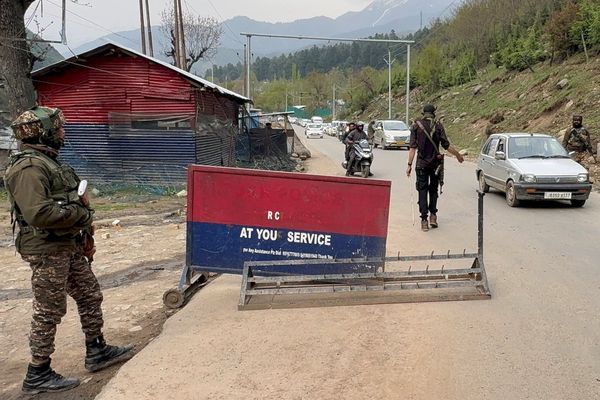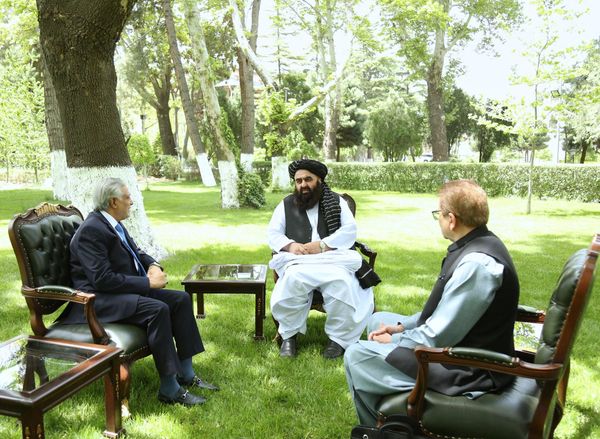
In a brightly lit studio, three DJs (Diogène Ntarindwa, Olga Mouak, Sébastien Foucault) take turns whooping and ranting into the microphones. With its raucous “zoo radio” format, this could be any mid-1990s show; there are jingles, phone-ins, news bulletins and the latest hits from Nirvana and Reel 2 Real. In fact, we are watching a re-enactment of a typical broadcast from RTLM (Radio Télévision Libre des Mille Collines), also known as “Radio Machete”, which encouraged the slaughter of more than 800,000 civilians, mostly from the Tutsi minority, in the Rwandan genocide.
When it was first presented in 2011, Hate Radio must have played not only as a memorial to atrocity but as a warning about the real-world effects of hate speech. Seen now, in the age of Alex Jones, Andrew Tate, Fox News and the WhatsApp mob lynchings in India, that horse has bolted. Any illusion of distance is undermined, too, by the sonic intimacy of the staging. We peer into Anton Lukas’s glass-walled set, which confines the DJs to an illuminated box like museum exhibits, but their invective (translated from French and Kinyarwanda in surtitles) reaches us via headphones and a pocket transistor. We hear the bloodthirsty ravings just as the Rwandan people did, the poison dripped directly into the ear.
Milo Rau, the outgoing artistic director of NTGent, is known for his provocative approach but the most confrontational aspect of Hate Radio is its unmediated plainness. Video scenes bookend the radio programme, with actors delivering harrowing testimony direct to camera. It is the restaged broadcast which dominates the evening, revealing in concentrated, claustrophobic real-time action how banal repetition (the Tutsis are constantly dehumanised as “cockroaches”) can grind down the listener’s defences.
The play could have gone further in this relentlessness, breaking through our appalled anger and even risking our boredom. But there is no question that it makes its horrors vivid and prosaic, down to the smallest details: a gun holster worn by one of the DJs, a silent sentinel in combat fatigues watching from the corner of the room, and a carpet the colour of faded blood.
At Battersea Arts Centre, London, until 22 April







